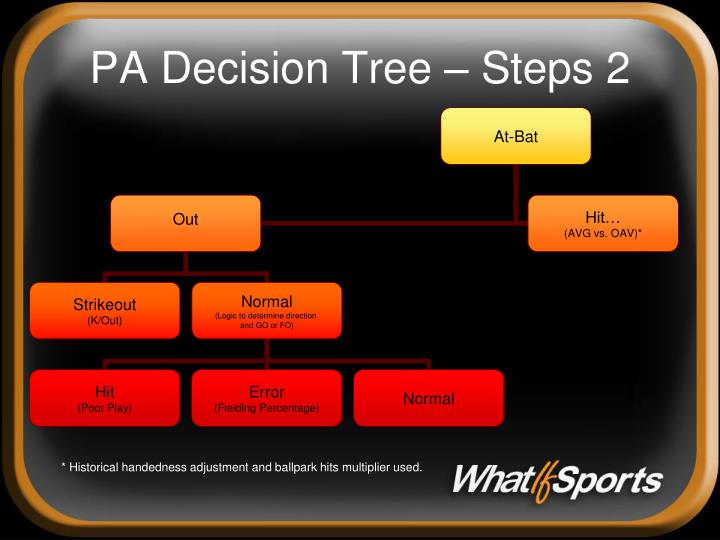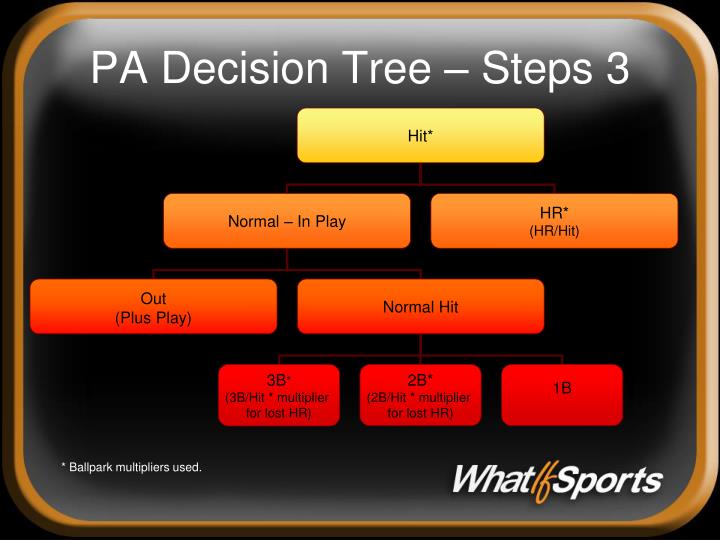Posted by 06gsp on 3/13/2020 8:45:00 PM (view original):
Posted by dannyjoe on 8/15/2017 11:32:00 PM (view original):
Without analyzing what kind of roster the teams had, I'll take a look at some Dodgers teams in progressive leagues I'm currently in. Here is the AVG/OBP/SLG at home (left) and road (right), skipping around between a few seasons to allow roster variability:
HockeyHead 1977 Progressive team in Dodger Stadium:
1977 batting: Home: .277, .341, .393 Road: .279, .347, .421
1977 pitching: Home: .243, .311, .339 Road: .260, .330, .387
1982 batting: Home: .254, .323, .371 Road: .274, .344, .432
1982 pitching: Home: .292, .357, .412 Road: .313, .369, .462
1987 batting: Home: .263, .337, .426 Road: .277, .358, .428
1987 pitching: Home: .257, .321, .382 Road: .256, .317, .386
Franchise With Farm System:
1977 batting: Home: .286, .350, .423 Road: .285, .356, .443
1977 pitching: Home: .259, .319, .365 Road: .260, .324, .391
1982 batting: Home: .267, .333, .388 Road: .282, .342, .394
1982 pitching: Home: .243, .301, .339 Road: .274, .323, .409
Average: Home: .264, .329, .384 Road: .276, .341, .415
So in close to 30,000 AB, the road batting average is 12 points higher and road slugging percentage is 31 points higher. In a few seasons, the home-road splits are close to neutral, in other seasons the numbers are noticeably higher on the road. The larger effect on slugging percentage than on batting average is at least consistent with extra base hits being suppressed in Dodger Stadium more than singles. I wish there was an easier way to run the numbers on more seasons.
have been reading this thread to form opinions on contrarian's theme league here (https://www.whatifsports.com/forums/Posts.aspx?topicID=518905) and I think this post would seem to disprove the theory that the singles rating for the park is used in the step to determine hit or out.
I was confused for a while as to why the singles rating isn't mentioned in step 9 of the WIS presentation, but thinking about it, the reason is you only need two of the singles, doubles and triples park factor to arrive at the final answer in step 9.
Example: let's say you've gotten to step 9 and know it's a non-home run hit, and after the individual pitcher/hitter match-up is calculated you have 70% single, 20% double, 10% triple. now you need to take the ballpark into account. let's say the doubles factor is 0.8 and the triples factor is 1.25. now you 16% double and 12.5% triple, and it follows single is now 71.5%. so the singles factor is 71.5/70 = 1.0214. You could just as easily have started with only the singles and doubles factors and derived the triples factor, or only the singles and triples factors and derived the doubles factor.
Also the WIS presentation list the relative hitter/pitcher impact on 2B/hit and 3B/hit but not 1B/hit for similar reasons. In fact, you can only adjust two of the three, because the cumulative probability needs to sum to exactly 1. If you increase the probability of a double and the probability of a triple, then the probability of a single must decrease. If you adjusted all three independently of each other, the probability wouldn't sum to 1 and the code would break.
Based on this, here is my theory on how the park effects work:
1. In the hit or out step, some secret overall park-specific factor is applied. This should not be the park factor listed on the ballparks page by WIS, because the overall impact of the park on scoring depends not just on the total probability of a hit, but also the distribution of potential hits (a team hitting .250 with all home runs is going to score a lot more runs than a team hitting .300 with all singles). And anyways, WIS has apparently told us the park factor doesn't matter. My guess would be WIS derived this from batting average at each park vs the league average.
2. In the home run or non-home run step, the park-specific HR factor is applied.
3. In the step where a non-home run hit is split into single, double or triple, the park-specific doubles factor and the park-specific triples factor are applied. The park-specific singles factor can then be derived as described above.
If this theory is correct, it must mean that the rating for single, double, and triple displayed on the ballparks page represent the secret overall park factor multiplied by the park-specific factor used in step 3 above. It cannot be just the factors in step 3 alone, because then you couldn't have something like Hilltop(+3 1B, +3 2B, + 3 3B) or Safeco (-2 1B, -2 2B, -1 3B); the probabilities would not sum to 1. Since the home run factor is independent of everything else, the effect listed could be the HR factor by itself or it could be the HR factor multiplied by the overall park factor.
From a different thread, but relevant, so reposting:


| |
-4 |
-3 |
-2 |
-1 |
0 |
+1 |
+2 |
+3 |
+4 |
| 1B |
x |
x |
0.908 |
x |
1.000 |
x |
x |
1.182 |
|
| 2B |
0.795 |
x |
x |
x |
1.000 |
x |
x |
x |
1.291 |
| 3B |
x |
0.523 |
x |
x |
1.000 |
x |
x |
x |
1.868 |
| HR/L |
0.634 |
x |
x |
x |
1.000 |
x |
x |
x |
1.385 |
| HR/R |
0.636 |
x |
x |
x |
1.000 |
x |
x |
x |
1.374 |
| PF |
|
0.820 |
x |
x |
1.000 |
x |
x |
x |
1.370 |
| |
|
|
|
|
|
|
|
|
|
| |
|
|
|
|
|
|
|
|
|
| |
-4 |
-3 |
-2 |
-1 |
0 |
+1 |
+2 |
+3 |
+4 |
| 1B |
0.816 |
0.862 |
0.908 |
0.954 |
1.000 |
1.046 |
1.092 |
1.138 |
1.184 |
| 2B |
0.800 |
0.850 |
0.900 |
0.950 |
1.000 |
1.050 |
1.100 |
1.150 |
1.200 |
| 3B |
0.400 |
0.550 |
0.700 |
0.850 |
1.000 |
1.150 |
1.300 |
1.450 |
1.700 |
| HR/L |
0.680 |
0.760 |
0.840 |
0.920 |
1.000 |
1.080 |
1.160 |
1.240 |
1.320 |
| HR/R |
0.680 |
0.760 |
0.840 |
0.920 |
1.000 |
1.080 |
1.160 |
1.240 |
1.320 |
| PF |
0.800 |
0.850 |
0.900 |
0.950 |
1.000 |
1.050 |
1.100 |
1.150 |
1.200 |
I'm going to use the same example Paul used in his presentation, then add in the modifiers.
2000 Pedro Martinez vs 1923 Babe Ruth:
[H/AB=((AVG*OAV)/Lgavg)/((AVG*OAV)/LgAVG+(1-AVG)*(1-OAV)/(1-LGAVG))
Where, LgAVG=(PLgAVG+BLgAVG)/2]
Thus: H/AB=((.393*.167)/.2791)/((.393*.167)/.2791+(1-.393)*(1-.167)/(1-.2791))
Where, LgAVG=(.283+.276)/2], or .2791
Log5 result = .
2504 This is the expected AVG for Ruth or OAV for Pedro in this matchup including normalization. If they had both been lefties or righties we then would've used the handedness modifier (new result would have been .
2379, but that doesn't apply here). So in this case we apply the hit modifier (1B effect). For Coors that's a multiplier of 1.182, and the new result is
.2959, for a -3 Park, like Petco, our modifier range is .862-.908, so in a worst case, that would be the original .2504*.862, or .
2158. The next step if it is a hit is to determine what type of hit. WIS works backwards and starts with HR. The HR/H rate is calculated the same way as the H/AB but instead of AVG, OAV, LgAVG we use bHR/H, pHR/H, and LHR/H.
Thus: HR/H=((.200*.132)/.0805)/((.200*.132)/.0805+(1-.200)*(1-.132)/(1-.0805))
Where, LgHR/H=(.124+.037)/2], or .0805
Log5 result = .
3027 (roughly 30% of the hits Ruth gets off of Pedro will be HRs. Now, in Coors, this wold be multiplied by the HR/RF (Sim assumes pull for hitter in calculations), so we take the .3027 and multiply the HR modifier of 1.374 to get a park adjusted rate of .
4159 or roughly 41 HR per 100 hits off of Pedro in Coors.
This is HR/H, not HR/AB. The HR/AB for this matchup is simply multiplying the H/AB rate by the HR/H rate. (.2959*.4159) for a HR/AB of .
1230 in Coors. In Petco we'd start with the -3 modifier (which puts us somewhere between .64-.76, so we'll use .7 for our estimate) and multiply the original outcome of .3027 by .7 to get the park adjusted HR/H rate of .
2118 or roughly 21 HR per 100 hits or a (.2158*.2118) .
0457 HR/AB in Petco (12.3 HR/AB in Coors & 4.57 HR/AB in Petco for this particular Batter/Pitcher matchup (7.58 HR/AB in neutral park)).
If it's not a HR, then using a regression from the pitcher ERA and the batters 3B/H and 2B/H, the SIM works to see if it's a + play on defense , or a triple or double the same as the HR above and uses the park effects the same way. Any hits that didn't become HR, + play, 3B, or 2B are singles.
*Does not include handedness adjustment or batter/pitcher weighting as displayed in "The Outputs" link in the prior post.
9/26/2020 12:10 PM (edited)